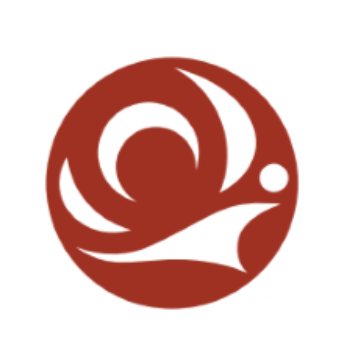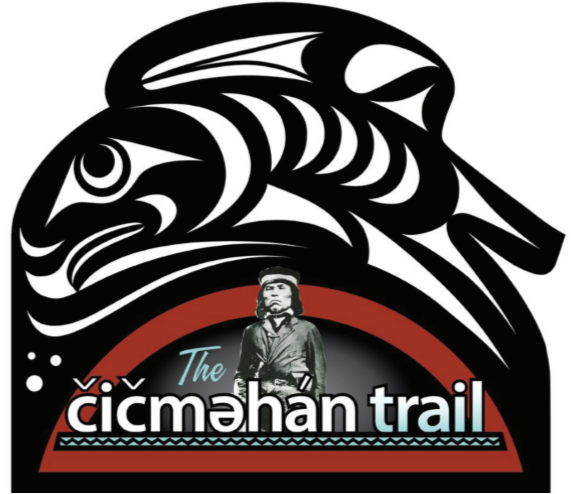|
 Trail Project Team Members... Trail Project Team Members...
Project Lead Celeste Kardonsky Dybeck, Jamestown SíKlallam Tribal Elder, longtime member of the Quimper Unitarian Universalist Fellowship (QUUF), and Native Connections Action Group member.
From the Native Connections Action Group (NCAG)
Lys Burden, Project Co-Lead, a noted trail planner, who served for seven years on the City of Port Townsendís Non-Motorized Transportation Advisory Board
Jo Blair, Tribal member of the Chinook Nation of SW Washington, and Chair of the NCAG, and QUUF member
Maria Mendes, Project Treasurer, NCAG Deputy, and QUUF friend
Luzi Pfenninger, Trail Planning Assistant, Port Townsend community liaison and QUUF friend
Connie Ross, descendant of Discovery Bay settlers and longtime QUUF member
Terry DuBeau, Trail Project Event Planner
Kate Storey, past NCAG co-facilitator and QUUF member
From the Jamestown SíKlallam Tribe
Betty Oppenheimer, Communications Specialist: interpretive text, publication design (also a longtime QUUF member and former QUUF Board President)
Bud Turner, Artisan and Signage Manager: Trail logo and signage design
David Brownell, Tribal Historic Preservation Officer: historical accuracy
Leanne Jenkins, Planning Director (retired): project logistics
Ben Neff, Systems Administrator: interactive on-line exhibit
From the Port Townsend Community
David McCulloch, Map Design and Cartography
Kathryn Neal, PE, Civil Engineer
Sonny Flores, Grand Opening Sound Tech
Wendy Feltham, Trail Photographer
Feedback and/or contributions for ongoing maintenance to the cicm?hŠn Trail:
Native Connections Action Group
P.O. Box 303
Port Townsend, WA 98368
chetzemokatrail@gmail.com
The Team would like to thank the Jamestown SíKlallam Tribal Council for embracing this project and contributing generously to its success. hŠ?n?? c?n (thank you)
 The nəxwsƛŠy'm' (strong) People The nəxwsƛŠy'm' (strong) People
ďSíKlallamĒ derives from nəxwsƛŠy'm', meaning ďstrong people.Ē The Jamestown SíKlallam Tribe is one of three SíKlallam bands; the others are the Lower Elwha Klallam and the Port Gamble SíKlallam Tribes. Before European settlement and treaty times, the SíKlallams were one people living on the North Olympic Peninsula, Vancouver Island, and across the San Juan Islands to the Bellingham area.
For several thousand years, the SíKlallams possessed a rich social and religious culture based on the abundant natural resources of the Northwest Coast, wintering at permanent village sites, and moving seasonally to other locations in their traditional territory for fishing, hunting and gathering. They were craftspeople skilled in woodcarving and basket making, and they fashioned decorative and utilitarian items from local plants, especially the Western Red cedar tree.
SíKlallam contact with Europeans began in the 1700s and increased in the 1800s, after the establishment of Hudsonís Bay Company trading posts in the Northwest. The SíKlallam people traded at Fort Langley, Fort Nisqually, and Fort Victoria, which were established in the 1820s, 1830s, and 1840s, respectively. The SíKlallam Tribe entered into the Point No Point Treaty with the United States in 1855, but they resisted removal to the reservation of the Twana people at Skokomish, preferring to remain close to their traditional areas. In 1874 the SíKlallam from the villages at Dungeness privately purchased 210-acres of land, establishing Jamestown, north of present-day Sequim. The population of Jamestown at the time was around 100, with about 17 families buying into the acreage. Citizens of the Tribe supported themselves by gardening, farming, fishing, providing transport by canoe, and working in the lumber mills in the surrounding area.
In the 1930s, the Tribe was given the choice of moving to the reservations designated for the other two SíKlallam Tribes or remaining where they were, unrecognized. They chose to stay on the land they had bought themselves. Tribal citizens received services from the federal government until 1953 when the government ceased recognizing them as Indians. Beginning in the 1950s, the three SíKlallam Tribes combined to litigate land claims and fishing rights. In cases that went to the Supreme Court of the United States, the SíKlallams ultimately regained the fishing rights they had been granted in the Point No Point Treaty, starting with the landmark Boldt Decision of 1974, which mandated that the State co-manage fishery resources with the Tribes.
Facing increasing problems in the areas of fishing rights, health care, and education due to lack of federal recognition as a Tribal entity, the Jamestown Tribe began an intensive effort to obtain recognition in 1974 and adopted a constitution in 1975. They received federal recognition on February 10, 1981. Since then, the Tribe has pursued land acquisition and economic development, using the resulting revenue to provide health, social service and educational and other benefits to its citizens.
Chief Chetzemoka is perhaps the best remembered SíKlallam leader, because he befriended the early Port Townsend settlers and helped the SíKlallam negotiate the difficult changes in their lifeways. The spirit of partnership still thrives today.
A Note About Language
Throughout this publication, both the words Klallam and SíKlallam are used. Both words originate from the Klallam word nəxwsƛŠy'm',
roughly pronounced new-skl-eye-yem. As with many Klallam words, this word was ďsimplified into EnglishĒ to be pronounced
SíKlallam or Klallam. We refer to the language as Klallam. The Lower Elwha Tribe has chosen to be known as Klallam people,
while the Jamestown and Port Gamble Tribes have chosen to use the word SíKlallam as their Tribal name.
 Message From Jamestown S'Klallam Tribal Council Chairman W. Ron Allen Message From Jamestown S'Klallam Tribal Council Chairman W. Ron Allen
Settlers and the indigenous peoples of the north Olympic Peninsula area have worked diligently to coexist and develop respectful relations despite their cultural differences. Chief Chetzemoka played a key role in establishing this relationship in the 19th century. The American Indian peoples of his day embraced the technologies and tools brought by the European cultures; the settlers benefitted from the Nativesí knowledge of the area and its climate, navigation, harvest and practical day-to-day survival.
Today in the 21st century, our SíKlallam and sister Tribes continue to strive to work together to solve problems in a complex society, respecting the values of both the indigenous and the non-indigenous populations of the area. This journey is a centuries-long acknowledgment of the history and the cultural differences between the American Indian and non-Native peoples who inhabit SíKlallam territory.
We celebrate and build on our ongoing community partnership and respectful relationship as we move forward into the 21st century for the benefit of our future generations.
W. Ron Allen, Tribal Council Chairman/CEO
Jamestown SíKlallam Tribe
|



